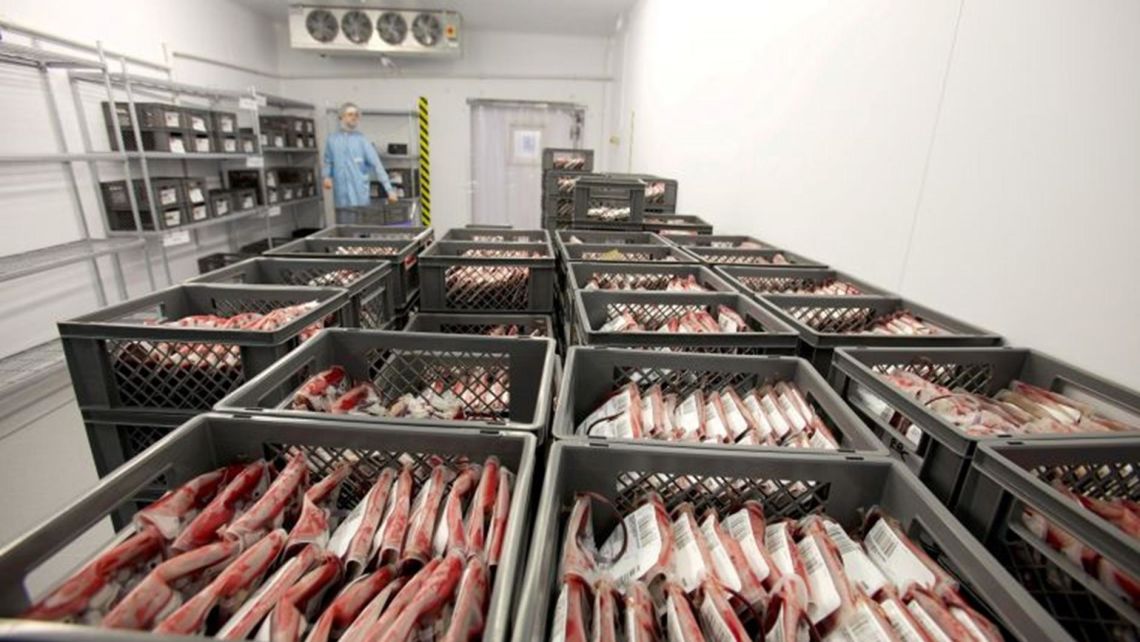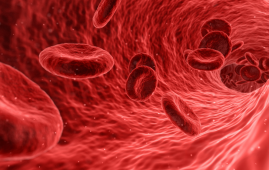

FlowScore (1) – a formula developed at Oxford University in collaboration with NHS Blood and Transplant – predicts how quickly red blood cells release their oxygen. This process is important for oxygenating the body’s tissues, including organs and muscles, particularly in people receiving large transfusions.
Healthy fresh red blood cells have a distinctive biconcave – or dumbbell – shape for efficient oxygen release. During refrigerated storage, red cells become energetically stressed and more spherical, which slows oxygen release. Using transplant kidneys, researchers at Oxford showed that perfusion with blood units that had undergone storage-related kinetic rundown was associated with poorer oxygen delivery, and that this could be restored by biochemically rejuvenating – or refreshing – the blood.
Factors affecting oxygen release from red cells were described at Oxford’s Department of Physiology, Anatomy, and Genetics but the testing method was too laborious for routine use in blood agencies working to improve the monitoring of blood stored for transfusion. To adapt the research findings to blood banking, NHS Blood and Transplant’s Component Development Laboratory joined the project, providing blood samples stored according to NHS protocols and measurements from haematology analysers.
During routine blood counts, haematology analysers use flow cytometry – a method that passes cells through a laser beam to study their characteristics. When light hits a cell, the pattern of scattering reveals information about their size and shape. It was found that this information accurately predicts oxygen release from red blood cells, and the predictive formula was called FlowScore (2)(3). The innovation makes measurements of red cell oxygen transport simpler, faster, and more accessible for laboratories worldwide.
Read the full story on the Department of Physiology, Anatomy and Genetics website.
more recommended stories
 Fat-Regulating Enzyme Offers New Target for Obesity
Fat-Regulating Enzyme Offers New Target for ObesityKey Highlights (Quick Summary) Researchers identified.
 Spatial Computing Explains How Brain Organizes Cognition
Spatial Computing Explains How Brain Organizes CognitionKey Takeaways (Quick Summary) MIT researchers.
 Gestational Diabetes Risk Identified by Blood Metabolites
Gestational Diabetes Risk Identified by Blood MetabolitesKey Takeaways (Quick Summary for Clinicians).
 Phage Therapy Study Reveals RNA-Based Infection Control
Phage Therapy Study Reveals RNA-Based Infection ControlKey Takeaways (Quick Summary) Researchers uncovered.
 Pelvic Floor Disorders: Treatable Yet Often Ignored
Pelvic Floor Disorders: Treatable Yet Often IgnoredKey Takeaways (Quick Summary) Pelvic floor.
 Urine-Based microRNA Aging Clock Predicts Biological Age
Urine-Based microRNA Aging Clock Predicts Biological AgeKey Takeaways (Quick Summary) Researchers developed.
 Circadian Control of Neutrophils in Myocardial Infarction
Circadian Control of Neutrophils in Myocardial InfarctionKey Takeaways for HCPs Neutrophil activity.
 E-Cigarette Use and Heart Attack Risk in Former Smokers
E-Cigarette Use and Heart Attack Risk in Former SmokersKey Takeaways for Clinicians and Nurses.
 36-Week Pre-eclampsia Screening May Reduce Term Risk
36-Week Pre-eclampsia Screening May Reduce Term RiskA New Preventive Strategy for Term.
 Cardiovascular Risk and Sudden Cardiac Death in Diabetes
Cardiovascular Risk and Sudden Cardiac Death in DiabetesRising Sudden Cardiac Death (SCD) Risk.

Leave a Comment